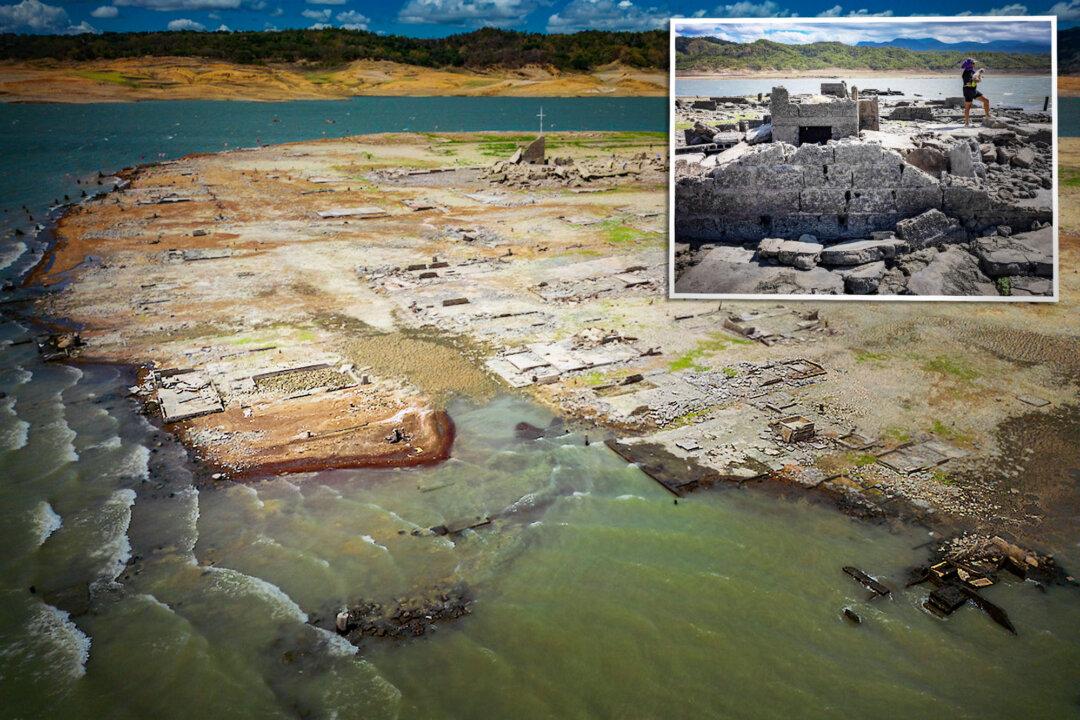The crumbled stone foundations of a once sunken church have reemerged from a lake amid record drought, along with broken tombstones and the ruins of a centuries-old town in the Northern Philippines.
Here, in the reservoir near Pantabangan Dam, 125 miles north of Manilla, children jump and climb among the remains of fallen houses, tourists take selfies, and local fishermen ferry visitors to and from the tiny island that once was fully submerged—but has now resurfaced for the longest span since the reservoir was first filled in the 1970s.






